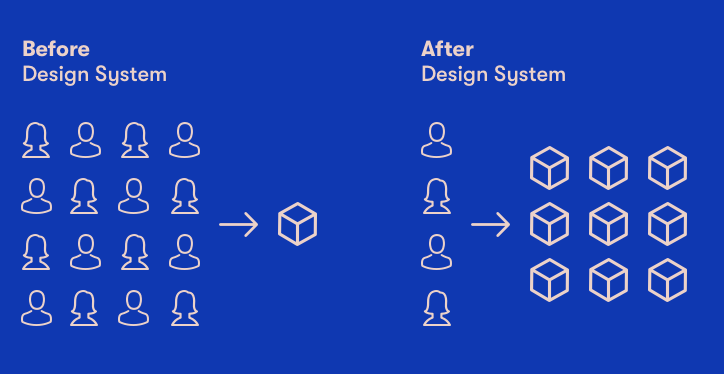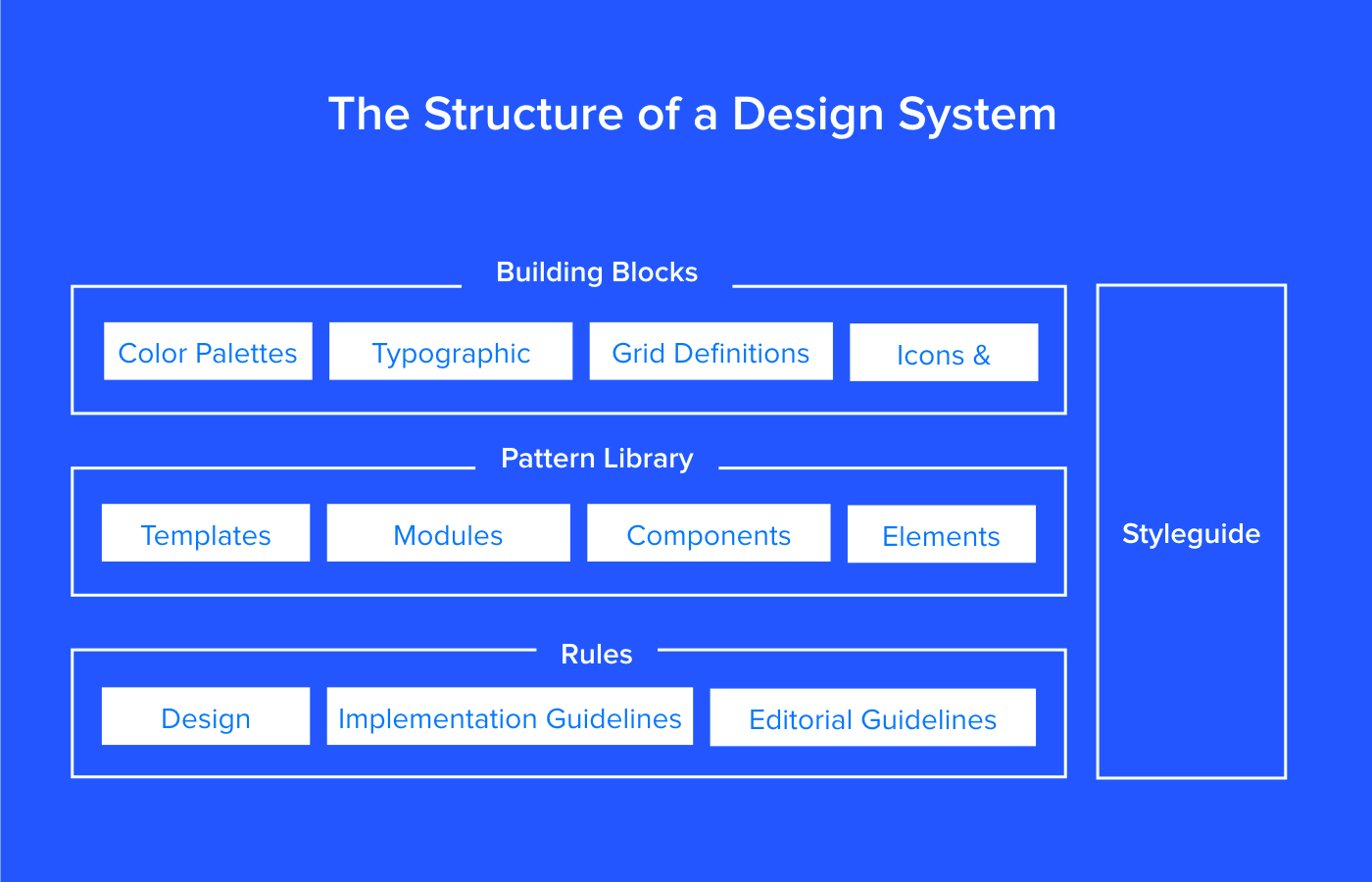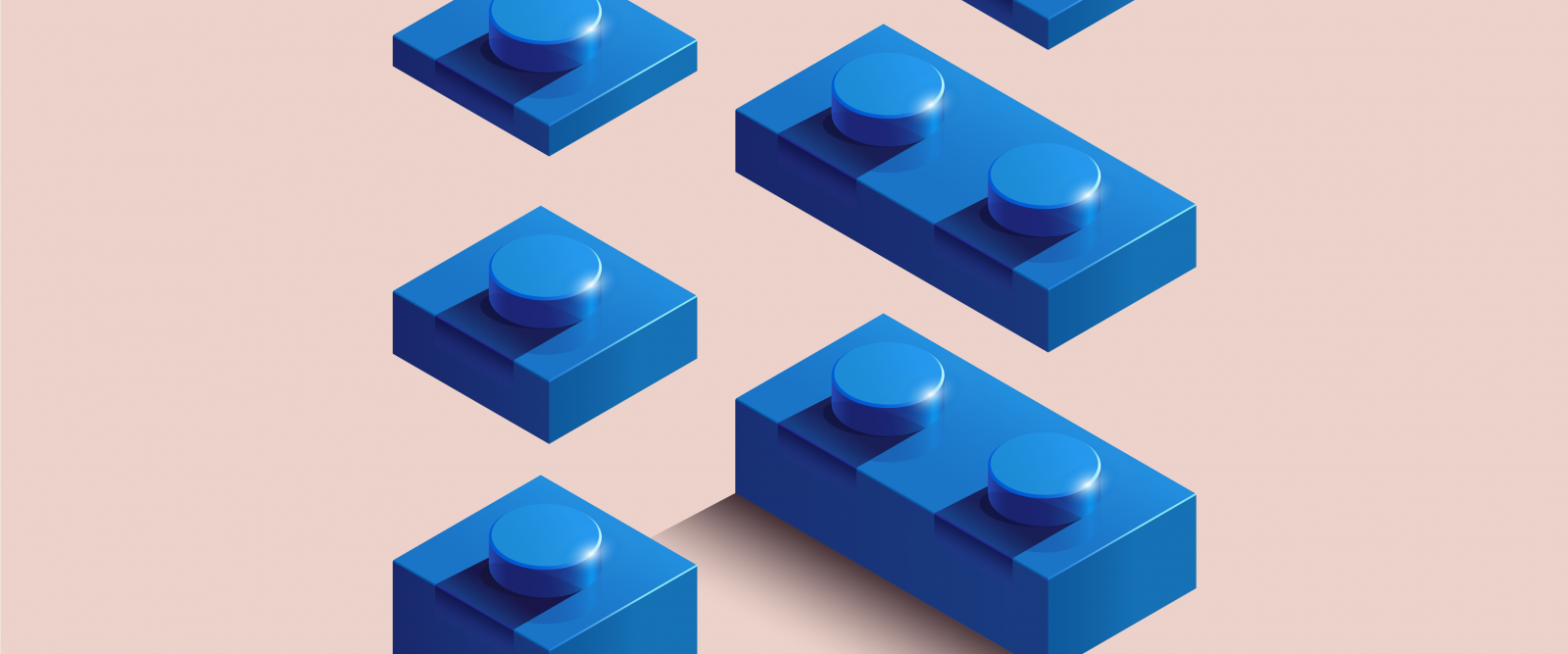Type in "What is a design system" on Google, and you'll get 7 770 000 000 results trying to define design systems. Also, the birds in front of my house have been chirping about design systems every morning now. It's needless to have another blog article serving the same dish in this huge buffet. Instead, in this article, we'll help you to find out if you need to start building a design system, how expansive a system you might need, and when you don’t need one at all.

The benefits of having a design system
Understanding not only the what, but the why behind the existence of design systems is crucial for building successful services and businesses. Companies like Google, Airbnb and Uber have been improving efficiency in their design and development workflow by incorporating unique design systems for their brand. Indeed, design systems come with many benefits when met with a clear need.
Ship faster and better products
A design system is created, firstly, to reduce design and technical debt. The more your company and products scale, the more features are added and the more products are built and managed by different teams. Sometimes products may be delivered by external agencies. Teams will face struggles in quality control, fragmentation of mobile devices and maintenance issues.
A centralized design system can create a more streamlined, predictable process that will help connect and keep the team of designers, developers and project managers on the same page along the development process. Naturally, the more people are on the same page, the faster and better the process will be.
Overall, this will lead to big improvements in product delivery - with fewer people involved.

Keep the brand promise, consistently
In order to deliver the promise of the brand, first, you have to start from within. If you have 10+ product teams constantly building, shipping and iterating, it’s common to lose sight of the overall user experience. Gradually, your products' identities will begin to fade away and design will look compounded.
The inconsistencies of a compounded design, such as different button sizes, interaction patterns or text field styles increase the cognitive load on the end user, slowing them down every day.
This is when a design system really shines. It can ensure a unified user experience through consistency and predictability of the interface.
More resources can focus on user-centric design
A design system frees designers and developers from the burden of repeatedly creating the same design elements when designing new screens or functions to a service. The real beauty of building a design system is that by deciding on details at once (or twice), you free up the whole development team to actually focus on solving real business problems. In effect, putting people over pixels.
"A design system is about creating space for people to invent and imagine."
Design systems aren’t 'one-size-fits-all'
There are different scales to a design system. Not every company should aim for a super-powerful design system, at least not from the beginning.
Instead, your company could start with more fundamental components, such as a unified colour system or more readable typography. As your company grows or your products scale up and your team begins to struggle with inconsistencies and design quality control, then you can start thinking about growing the design system.

When you don’t need one
However trendy design systems may be, it doesn't mean every company should create a design system just for the sake of having one. There are certain cases where you simply don't need a robust design system.
If your team is small and well communicated
Design systems really shine when it comes to team communication and maintaining consistency in product development, especially as teams get bigger in size and numbers. Take your time and sit down with your team to find out if your team actually comes across these issues on an everyday basis. A lot of the time, small teams manage well.
Product development takes time and mistakes happen regardless of the size of your team. Yet, at the end of the day, if everyone knows what everyone else working on, developers all share the same code repository and tasks are approved by product owners, then mistakes can be caught and easily corrected.
Even once your product makes it to the market and your team grows, there may still be more practical ways to improve communication and consistency than building a robust design system. Your team might just need better documentation, and your company may still be able to thrive using stronger brand assets and guidelines.
[Designers nowadays]
— ᴠᴀɴ sᴄʜɴᴇɪᴅᴇʀ (@vanschneider) January 7, 2019
Client: I need a new business card
Designer: Ok, so you want a design system?
Client: I need a new logo
Designer: How about a design system?
Client: I don't need anything right now.
Designer: Okay, I'll make you a design system!
If your company is not in active product development mode
Software product development is a constant cycle, and almost never-ending. However, the same story doesn't apply when it comes to time-sensitive products like websites, digital marketing campaigns, etc. Your product may just be a CMS that's occasionally updated by content editors, and that’s it.
In such a case, a design system won't bring additional value, as design systems only begin creating value in the long term. They only shine when there's active development happening - when designers are constantly working on new features and need to apply reusable components, or developers are building new login screens and need to see what text field types are already in the system.
So, if your company doesn’t expect to see a lot of new product development, then having a design system simply doesn't make sense.
If your business is not ready to invest
Design systems are products, and creating products requires investment. It takes time, resources and full support from a cross-functional team in order for a design system to be built, maintained, and evolved. If your business can endure an upfront investment, then design systems are there to shine over the long term.
"Sometimes a complicated system can be worse than no system at all."
On the other hand, if your company is a start-up and has 7 months worth of budget left to find a way to market, then building a design system which your users don’t need is a huge risk and might well be the best way to go out of business. Sometimes, a complicated system can be worse than no system at all.
Design systems are most fruitful when it comes to the work of your team of designers and developers. They will most likely be the first ones pushing to build a design system. And why not - the work is fun and it makes their life easier. However, if you're responsible for your business, take the time to consider the true costs and benefits of having a robust design system. This will help you see past the hype and make sure that the investment will pay for itself before jumping on the bandwagon.
At the end of the day, it has to make sense for your business.
The writer is a UI/Visual Designer at Sangre, a man of impeccable style, graceful words and a passion for beautiful, functional user interfaces.





